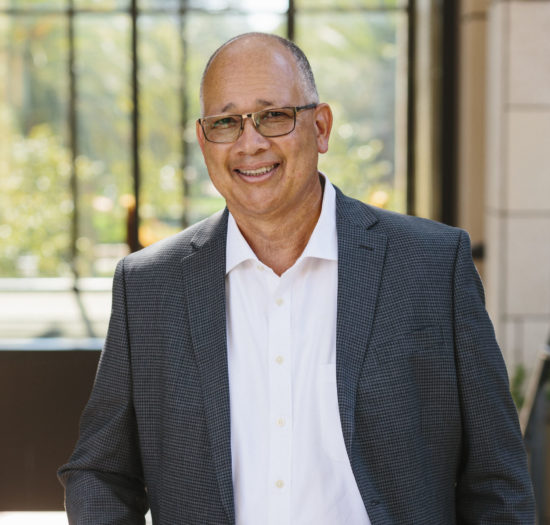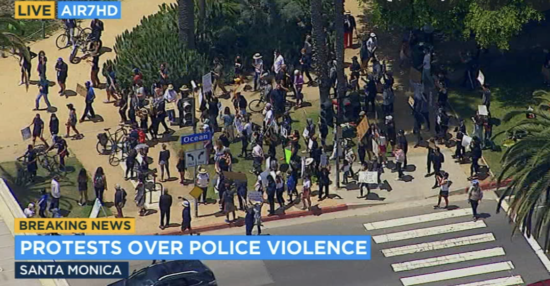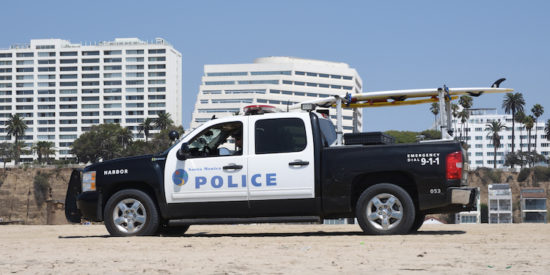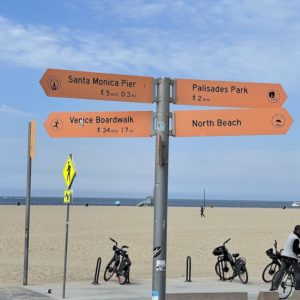Why Can’t Santa Monica, California Succeed at Police Oversight and Reform?
Essay: Why Can’t Santa Monica, California Succeed at Police Oversight and Reform?

Stanford Center for Racial Justice is introducing this four-part retrospective from Executive Director George Brown as part of our upcoming multimedia series, On The Ground: Police Reform in Santa Monica, California. He has unique insights from serving on a community advisory committee to recommend reforms in the aftermath of George Floyd’s May 2020 death, and later serving as the first Chair of Santa Monica’s Public Safety Reform and Oversight Commission.
In Part One below, he provides an overview of how Santa Monica first moved to address police reform and oversight, and then resisted its implementation. This is a paradox for a city that overwhelmingly votes for progressive issues and candidates in state and national elections. He poses the question: If Santa Monica cannot implement essential civilian oversight and police reform, then is it incorrect to label it a progressive city committed to racial justice? What are the implications for cities with similar demographic profiles?
PART ONE: SANTA MONICA PLEDGES TO REFORM POLICING
The summer of 2020 was a period of turmoil, angst, and hope across the country. In the wake of mass protests in support of the Black Lives Matter movement, many organizations vowed to pursue anti-racist policies and work to dismantle systemic racism in the U.S. Hundreds of cities adopted the Obama Mayor’s Pledge, promising to pursue a variety of efforts to reckon with America’s history of racism. One of those cities was Santa Monica.
On May 31, 2020, the Santa Monica Police Department badly mishandled multiple disruptive events. The department under-policed certain criminal activities yet over-policed peaceful marchers. There were at least two groups of peaceful protesters in various locations. SMPD unleashed rubber bullets and tear gas on the marchers, resulting in chaos and injuries. They also mishandled mass arrests of protesters. Meanwhile, they chose not to protect local small businesses, allowing organized groups of criminals to blatantly and systematically break into and raid numerous stores and shops and shatter the community’s sense of safety and security. The police were overwhelmed, under-trained, mismanaged, and poorly led. They committed numerous violations of SMPD policies and practices. The finger-pointing and spin control started immediately, followed by self-serving and later genuine investigations. By late fall, the police chief resigned. The events of that day are an ongoing source of disagreement and division in the city, along with regular attempts at revisionist history.
Here’s the story of how Santa Monica failed on police reform.

City Pledges Reform
The Santa Monica City Council issued the following statement in June 2020:
The Council unanimously adopted the Obama Pledge to reform local police practices to limit use of force. Last week, following the widespread civic demonstrations that took place across the nation in reaction to the killings of George Floyd, Breonna Taylor, Ahmaud Arbery, and too many others, the Obama Foundation asked cities to commit to action and pledge to change policies to reduce police use of force. Mayor Kevin McKeown signed the pledge on June 4. Last night, the Council unanimously voted to adopt the pledge and directed staff to take four steps:
- Review Santa Monica Police Department (SMPD) use of force policies.
- Engage with the Santa Monica community by including a diverse range of input, experiences, and stories in the review.
- Report out findings from the review to the Santa Monica community and seek feedback.
- Reform SMPD use of force policies based on the review.
“The Obama Pledge commits us to a clear process for real change,” said McKeown. “The four points of review, engage, report, and reform create a blueprint for our community to come together, making sure all voices are heard and all facts are considered, as we implement deep and long-lasting change to eliminate institutional racism. This is a task we cannot delay. Our work will be swift, it will be inclusive, and it will reflect Santa Monica’s long history of caring about all members of our community.”
A Public Safety Advisory Committee is Formed
Around this time, I received a call from Santa Monica’s interim city manager inviting me to serve on a Public Safety Reform Advisory Committee (“PSRAC” or “Advisory Committee”) to help provide advice to the city about potential reforms to public safety approaches in the city. The Advisory Committee’s deadline for initial recommendations was early September.
I had been witnessing the seemingly endless tragedies of police aggression and killings of unarmed Black men and women for decades and feeling generally depressed about our society’s inability to address the long-standing challenges of policing in America and its disproportionate consequences for Black and Brown people. The disproportionate aggression towards and mistreatment of Black people by police has been extensively documented and researched over the past century. A recent book by Elizabeth Hinton, America on Fire, reviews in detail the many hundreds of rebellions during the mid-1960s and the ensuing decade that were catalyzed by chronic police abuse and excessive force. I believe that each of us sitting in a position to help address these historic challenges should find a way to make a difference.
I readily agreed to serve on the Advisory Committee and do my part to improve policing and public safety in Santa Monica.
I felt a sense of optimism. Now, perhaps things would change. The whole world watched George Floyd’s murder and erupted in protest. America was finally going to grapple with its long tragic history of how it had treated its Black citizens. Santa Monica, known for its progressive politics during the 1970s, could be a leader in advancing needed change.

The Advisory Committee Proposes a Reform Agenda
I joined a dozen other community members and two Santa Monica police officers on the PSRAC to meet and discuss ideas for improving public safety in Santa Monica.
Some of the Advisory Committee members had lived in Santa Monica most of their lives. Others were relative newcomers. Santa Monica had been one of my regular hangouts when I first arrived in Los Angeles in the early 1980s, but I couldn’t afford to live here at the time. In more recent years, I purchased a home and was able to spend a portion of my time in this iconic beach city that I have long been fond of.
The community representatives quickly bonded and started to coalesce around a variety of issues. Several members explained the history of police incidents involving Black people in Santa Monica, noting that there had never been a reckoning, apology, or healing process associated with these incidents. Others noted data generated by the police department showing disproportionate stops, citations, and arrests of Black and Latinx people relative to their percentage of the population. We received additional input about past unsuccessful efforts to improve policing in the city.
I helped point the committee to existing resources on police reform that I had a role in producing. A few years earlier, I had co-led a large group of lawyers on a pro bono matter for the Leadership Conference Education Fund to help create the publication New Era in Public Safety: A Guide to Fair, Safe and Effective Community Policing (March 2019). The New Era report contained a chapter on best practices for use of force policies and our committee borrowed those ideas as part of our ultimate recommendations.
After about eight weeks of work, the PSRAC produced a set of recommendations that included formation of a public safety reform and oversight commission, adoption of alternative responses to 911 calls, additional resources to address mental health crises, increased presence of neighborhood resource officers, promotion of more community engagement including healing and restorative justice, and a comprehensive list of recommended best practices for use of force, among other things. The two police officer representatives objected to most of our proposals, while the vast majority of the committee approved the recommendations.
City Council Unanimously Embraces Police Reform and Oversight Agenda
I was feeling optimistic when we submitted our recommendations to the interim city manager in the first week of September 2020. That’s also when the first signs of trouble became apparent to me.
The interim city manager rejected our proposals. Not explicitly. What she did was submit a different proposal for the upcoming Council agenda from those recommended by the Advisory Committee. Her proposal replaced the oversight commission with what I deemed a milquetoast-community-talking committee, and did not include most of our other recommendations, including the extensive list of best practices for police use of force policies.
During a telephone call on the Friday before the Council meeting, the interim city manager told me that she was doing us a favor. The explanation was that if she had adopted our recommendations, the union and police officials would have worked behind the scenes over the weekend to defeat our proposals. Instead, she offered, the Advisory Committee members could spend the next few days lobbying Council members to adopt our proposals. She indicated that she would not object if the City Council decided to approve the PSRAC proposals instead of the one she submitted. The logic of this argument still escapes me.
That weekend, Advisory Committee members and other community members who had been supporting our efforts sprang into action. We called, wrote, emailed, and texted our Council members and explained our views. While I personally had never been involved in city-level politics, I did know several of the incumbents because I had defended Santa Monica in a major litigation matter. My sense was that the Council members I knew trusted me and the other members of the Advisory Committee, and believed our proposals were reasonable.
On Tuesday, September 8, 2020, the City Council unanimously chose to adopt the Advisory Committee’s recommendations largely unchanged. This meant the establishment of a civilian oversight body, and instructions that the SMPD review its use of force policies to ensure that they reflected the best practices as outlined in the Advisory Committee’s recommendations.
I was elated.

Santa Monica Delays, Blocks, and Weakens Police Reform and Oversight
Looking back, now two years later, September 8, 2020 was the peak of the momentum for police reform and civilian oversight in Santa Monica. The forces of resistance kicked in immediately, though I did not fully comprehend its vigor at the time.
How could this happen in Santa Monica, a place where its residents regularly vote overwhelmingly for progressive issues and candidates in state and local elections? What are the reasons for the powerful forces that are resistant to any attempt to have community input on how policing is conducted in the city? What are these forces and how can they be overcome? If fundamental efforts towards improving policing cannot be pursued in a city with a progressive political reputation, what are the implications for efforts in other cities with political and demographic profiles similar to Santa Monica? What are the implications for pursuing racial justice and equitable policing in such places?
I will address each of these questions in the next installments.
Photo source: Screenshot from ABC7 News; Wikimedia Commons
